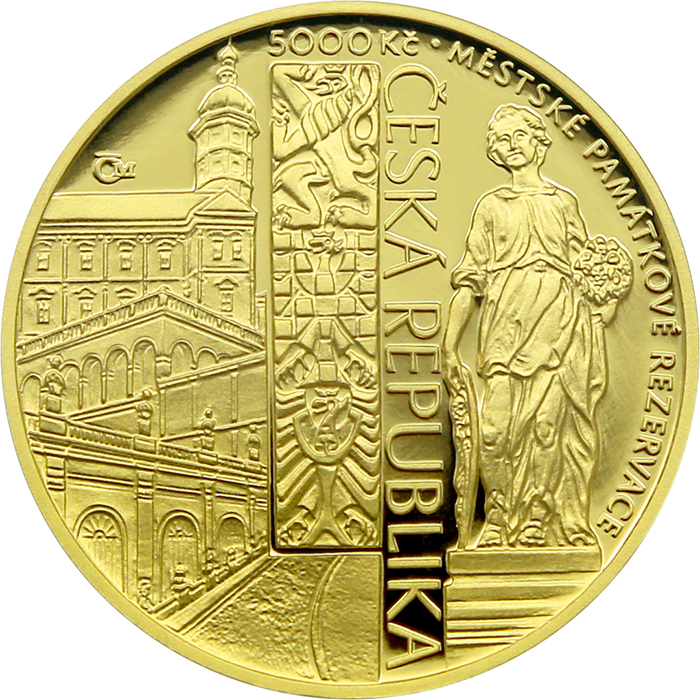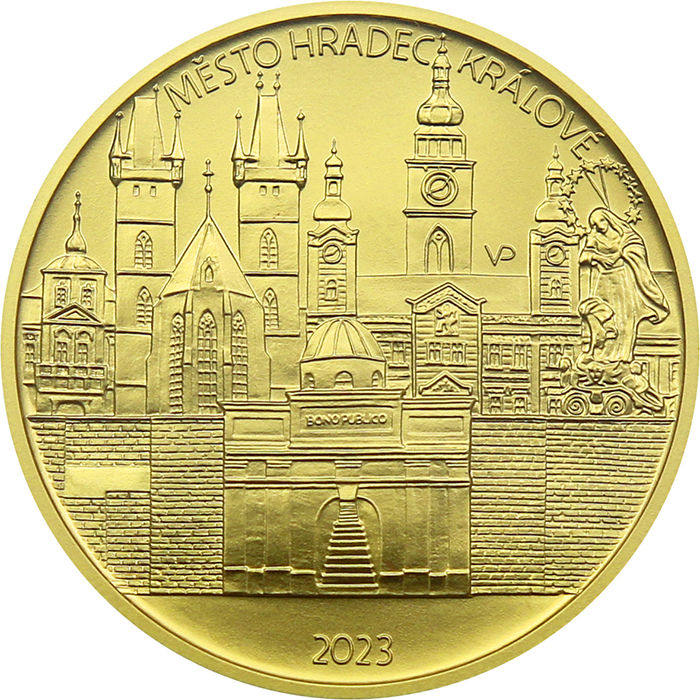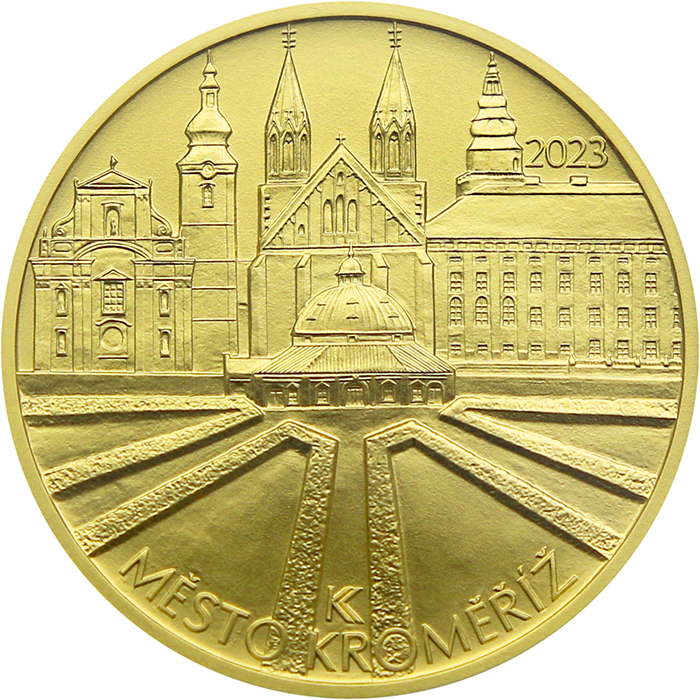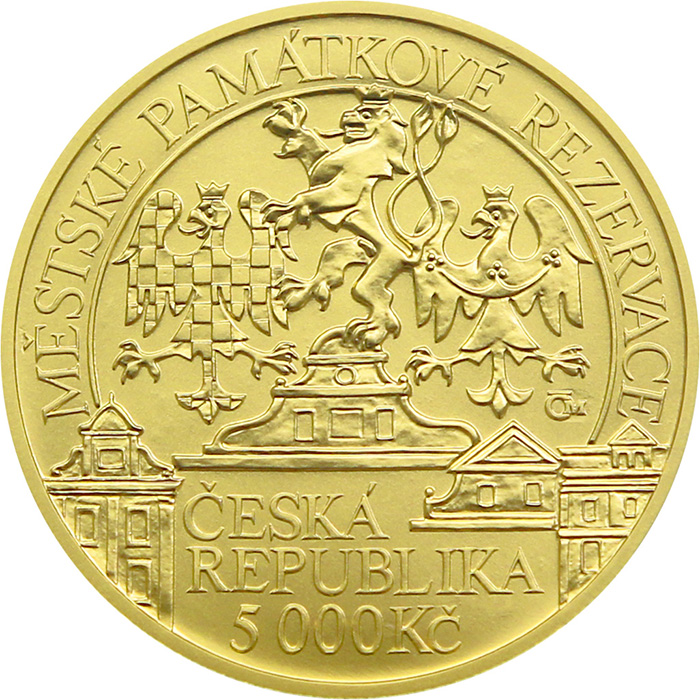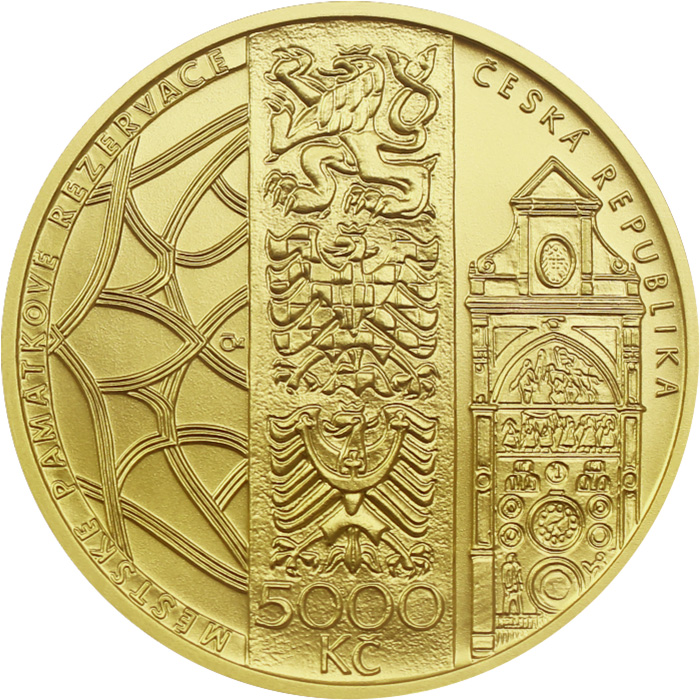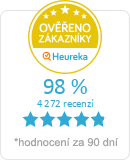Gold Coin 5000 CZK Municipal Monument Reserve Mikulov 2022 Standard
Issue: 31 May 2022
The product cannot be ordered now.
NOT IN STOCK
View the product
Detailed description
1/2 Oz gold coin - Mikulov Municipal Monument Reserve
On the reverse side of the coin is a composition of depictions of the most important architectural monuments of the Mikulov Municipal Conservation Reserve, namely, from left, the Dietrichstein Tomb, the Upper Synagogue and the sgraffito burgher's house U Knights with a corner quadrangular bay window. At the upper edge of the coin is the text "CITY" and to the left of the bay window is the vertical text "MIKULOV". The year of mintage '2022' is above the depiction of the Dietrichstein tomb. The initials of the author of the coin, academic sculptor Zbyněk Fojtů, which are formed by the composition of the letters "F" and "Z", are placed at the right edge of the coin.
On the obverse side of the coin, the Mikulov Castle is depicted in the left part. In the centre of the coin is an artistic composition of stylised heraldic animals from the great state emblem, namely the Czech lion at the top, the Moravian eagle in the middle and the Silesian eagle at the bottom. To the right of the heraldic animals is the vertical text 'CZECH REPUBLIC'. The right part of the coin depicts the statue of Pomona from the medieval fountain in Mikulov Square. The denomination of the coin with the abbreviation of the monetary unit "5 000 CZK" is located above the Czech lion. At the right edge of the coin, the text 'MĚSTSKÉ PAMÁČKOVÉ REZERVACE' appears in the description.
The historical centre of Mikulov was declared a municipal monument reserve in 1982. The inner part of the town, through which the remains of the original fortifications run, consists of a large castle with a garden, a square and adjacent streets with picturesque town houses and a preserved Jewish quarter with a synagogue.
The first written records of the market settlement of Mikulov date back to 1173. In 1410, the medieval walled town was promoted to a town. At this time, Mikulov was under the rule of the noble family of Liechtensteins, who rebuilt the Romanesque castle in Gothic style.
The greatest building boom in the history of the town begins with the arrival of the Dietrichstein family in 1575. Adam of Ditrichstein receives the rich Mikulov estate from the Emperor as a replacement, which prospers thanks to trade and winemaking. The new lord begins the reconstruction of the original Gothic castle into a family residence.
His son František of Ditrichštejn takes over the estate in 1611. As an influential cardinal and bishop of Olomouc, he moves to Mikulov with his episcopal office, which requires adequate premises. He continues to rebuild the castle into a magnificent Renaissance chateau surrounded by a garden. The luxurious interior is decorated with frescoes, gilded stucco, paintings and furniture imported from Italy. The castle library is filled with the most extensive collection of 10,000 volumes in Central Europe at that time.
The first theatre in the Czech lands is built near the northern forecourt. In thanksgiving for surviving the plague epidemic, the Church of St. Sebastian with the Stations of the Cross is built on Svatý Kopeček. The new central square, located in the immediate vicinity of the castle, is lined with two-storey houses influenced by Italian architecture. The square includes the first Loreto chapel in Moravia. Mikulov is becoming the commercial and cultural centre of Moravia.
The period of development ends with the Thirty Years' War and the occupation of the town by the Swedish army in 1645. The Swedes almost completely plunder the castle, including the unique library. After their departure, the owner of the manor, Ferdinand of Ditrichstein, commissioned a Baroque reconstruction. In 1719, the castle burns to the ground and the whole town is seriously affected by the fire. The Ditrichsteins begin new construction of the mansion and the reconstruction of the town.
The devastating fires in Mikulov are repeated and in 1784 350 houses are destroyed and the Church of St. Anne is badly damaged, including the collapse of the Loreto Chapel. The Ditrichstein funeral chapel was built on the ruins of the church.
At the end of World War II in 1945, fighting with retreating German troops causes another fire that drastically devastates the castle. The current appearance of the burnt-out monument was realised in the 1950s according to a design by the Brno architect Otakar Oplatek.
This product is part of the following product sets:
Urban Conservation Reserves SeriesProduct Specifications
Application form
Thanks to our position on the market, we can try to provide you with a product that is currently sold out or unavailable for a longer period of time. Simply fill in the application form and we will contact you as soon as we are able to secure the product.
Filling in the application form is not binding for you.
Buyback contact form
We will be happy to buy investment metals purchased from us or from our competitors. Our customers always get the highest price offered at any given time. Fill out the form below and we will contact you. Thank you for your trust.





